Case Studies: Their Role in Building Trust in Prospective Clients
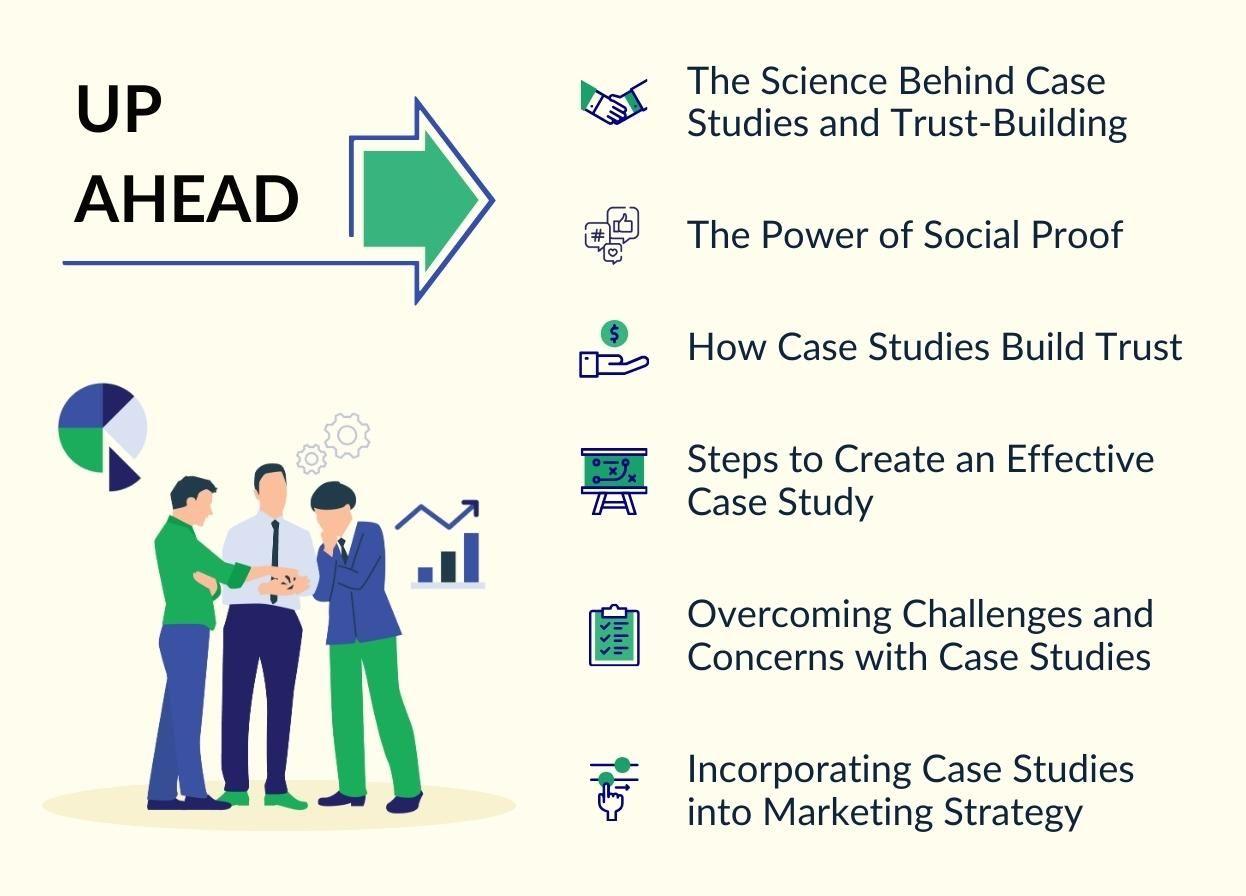

Trust is not merely a buzzword; it's a potent force that can make or break your brand's reputation, especially when it's difficult to differentiate between natural and artificial. Therefore, in a world brimming with choices, how can you establish trust with your prospects? Enter the unsung heroes of marketing: case studies.
There’s a famous saying “Don’t say, show; Don’t promise, prove.” Case Studies do exactly that for businesses.
The Science Behind Case Studies and Trust-Building
Trust turns a business into a brand. It forms the very foundation of the buyer-seller relationship, irrespective of whether you're operating in the B2B or B2C space.
In a marketplace teeming with choices, customers gravitate toward brands they can trust. They want to feel confident that the product or service they're investing in will meet their expectations and provide value for their hard-earned money.
Here are some of the psychological factors influencing trust formation.
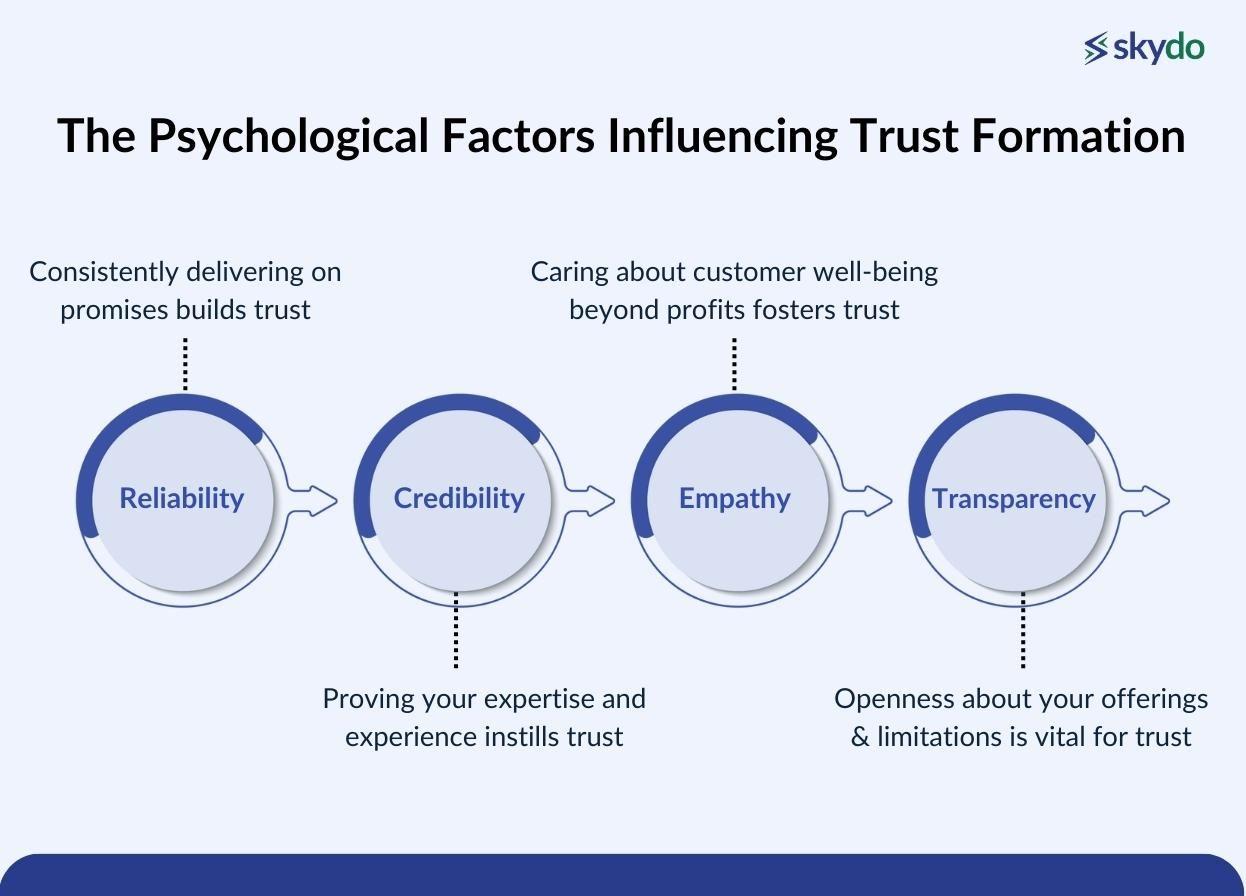
- Reliability: Customers want to believe that you will consistently deliver what you promise. It's the pillar of trust.
- Credibility: It involves showcasing your knowledge, competence, and experience. Customers trust those who are credible because they believe such individuals or brands have the know-how to fulfil their needs.
- Empathy: Understanding and empathising with your customer's pain points shows that you genuinely care about their well-being and aren't solely focused on profits.
- Transparency: Being transparent means being forthright about your product or service, pricing, policies, and any potential limitations. A lack of transparency erodes trust quickly.
Then, where do case studies fit into this trust-building equation? Case studies are an incredibly effective tool because they address these psychological factors head-on. They offer real-world examples that showcase your reliability, credibility, empathy, and transparency in action.
In the pages of a well-constructed case study, prospects can find the evidence they need to trust your brand, making them more likely to become your customers.
The Power of Social Proof
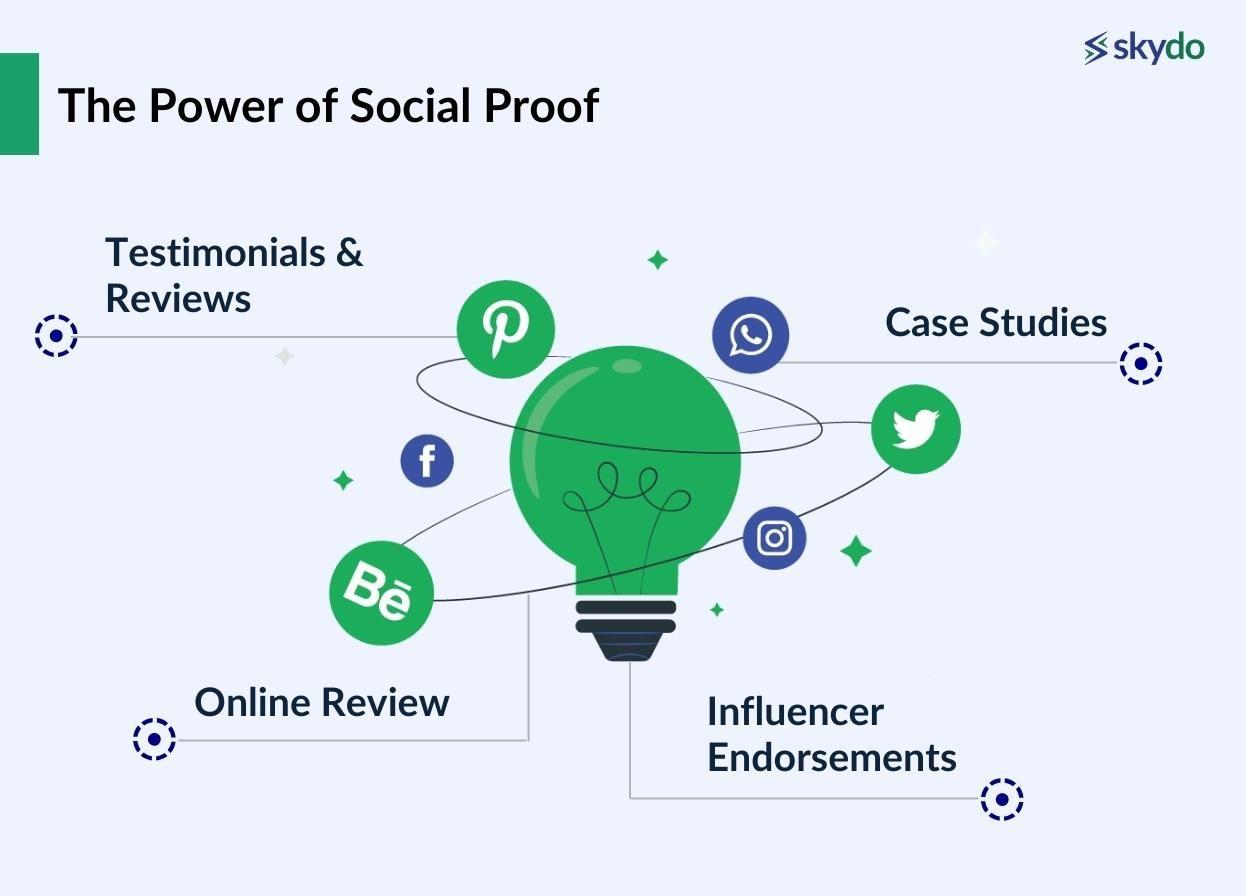
In the context of business and marketing, social proof is an incredibly influential tool. It taps into our innate desire to make decisions validated by the other’s choices.
Social proof in the buyer-seller relationship helps potential customers feel more confident about their decisions. When people see other’s positive experiences with a product or service, they tend to believe they will too. Various forms of social proof exist, each with its unique impact on consumer behaviour.
- Testimonials and Reviews: Customer testimonials are written or spoken endorsements from satisfied customers, sharing their positive experiences with a product or service.
- Online Reviews: Platforms like Yelp, Google Reviews, and Amazon provide spaces for customers to share their feedback and ratings.
- Influencer Endorsements: Influencers are individuals with a significant online following and credibility in a particular niche. When they endorse a product or service, it can sway their followers' opinions and buying decisions.
- Case Studies: Case studies are in-depth narratives that showcase how a specific customer or client benefited from a product or service. They provide a detailed account of the problem, solution, and results, offering a persuasive form of social proof.
Let’s dig deeper into the world of case studies as a potent form of social proof.
How Case Studies Build Trust
Case studies provide a window into the real-world application of your services or products. You offer tangible evidence of your capabilities by presenting actual client projects and outcomes.
This authenticity is invaluable in building trust because it shows potential clients that you have a track record of delivering results in practical, non-theoretical settings. Let’s see how these brands won trust with their case studies.
1. Figma’s role in Notion’s comeback
In this fantastic narrative on the downfall and rise of Notion, Figma beautifully shares its clients’ journey addressing their pain points and how Figma’s features helped them to go from dying to surpassing competitors.
2. Razorpay’s role in boosting PickYourTrail’s efficiency by 40%
This case study is an ultimate example of penning customers’ pain points and how they helped them with concrete evidence of success, and defining the targeted metrics. The quantified title of the study makes it catchy and the customer’s testimonial in their own words improves the trust factor.
3. Slack’s role in streamlining Spotify’s operations and boosting ad sales
Slack demonstrates expertise and dives deep into the strategies used to help their client, Spotify. It’s an extensive study that includes all the necessary elements to impress potential clients.
4. Grammarly’s role in cutting editing time for Frost & Sullivan by 60%
This to-the-point case study is clear and an effective format demonstrating how they helped clients in the past without being too preachy.
Considering the above samples, how can you create the perfect case study for your business/brand? Here are some tips to get started.
Steps to Create an Effective Case Study
By following these steps, you can create an effective case study that not only highlights your skills but also demonstrates your ability to solve real-world challenges for your clients, ultimately attracting potential customers and building trust in your services.
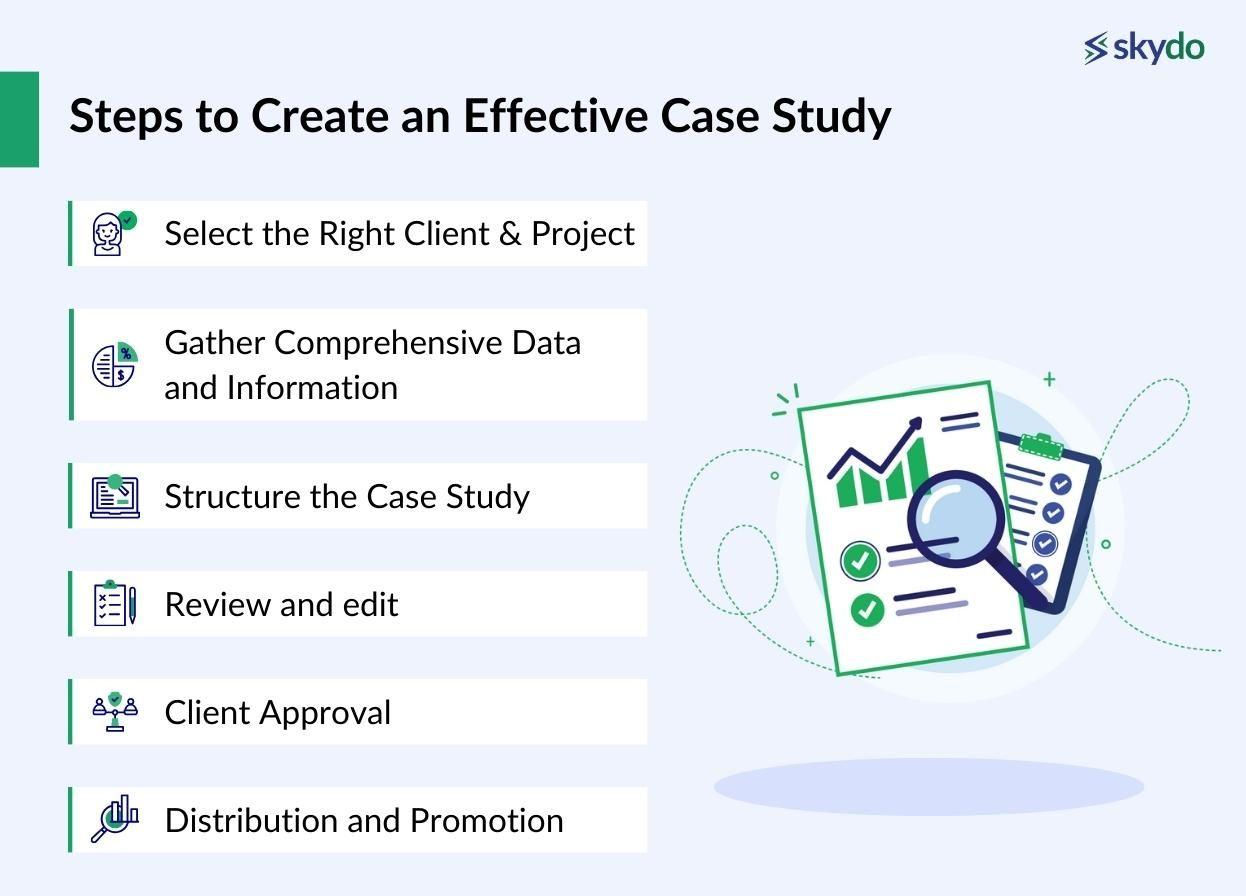
1. Select the Right Client and Project
Choose a client and project that represents a successful and noteworthy example of your work. Look for projects that demonstrate your expertise, highlight your strengths, and align with your target audience's interests. Don’t forget to get consent from the client or project owner before you start making the case.
2. Gather Comprehensive Data and Information
Collect all relevant data and information related to the project, including its details, client background, challenges faced, goals, and outcomes. Be thorough in your data collection, using a combination of interviews, surveys, documents, and analytics.
3. Structure the Case Study
Decide on the structure and format of your case study. A typical case study structure includes:
- Introduction & Client Background: A compelling introduction provides context on the project. Briefly introduce the client, their industry, and the specific challenges they faced. Set the stage for the reader to understand why the project was important.
- Understanding Challenges and Implementation of Solutions: Describe in detail how your team approached the client's challenges. Explain the strategies, methodologies, and solutions you implemented. Use clear and concise language to convey your expertise and problem-solving skills.
- Results and Outcomes: Highlight the measurable results and outcomes of your work. Use data, metrics, and Key Performance Indicators (KPIs) to demonstrate the project's success. Show how your solutions addressed the client's challenges and achieved their goals.
- Client Testimonials: Include quotes or testimonials from the client. These should provide a firsthand account of their satisfaction with your services and the impact of your solutions. Testimonials add credibility and authenticity to your case study.
- Visual Elements: Incorporate visual elements to make the case study more engaging and informative. Use charts, graphs, and before-and-after visuals to illustrate data trends, improvements, or transformations. Visuals help readers quickly grasp the key points.
4. Review and edit
Check your case study carefully for grammar, spelling, and coherence. Make sure it flows logically and tells a compelling story. A well-edited case study reflects positively on your professionalism.
5. Client Approval
Before publishing or sharing the case study, seek approval from the client to ensure they approve the information shared and the way their business is portrayed.
6. Distribution and Promotion
Once the case study is ready, strategically distribute it to your target audience through your website, social media, email marketing, or other relevant channels. Use it as a powerful marketing tool to showcase your expertise.
Overcoming Challenges and Concerns with Case Studies
When creating a case study, it's important to overcome challenges and address concerns related to confidentiality, balance the portrayal of positive outcomes with realistic challenges, and ensure the authenticity of the case study. Here's how you can tackle these issues.
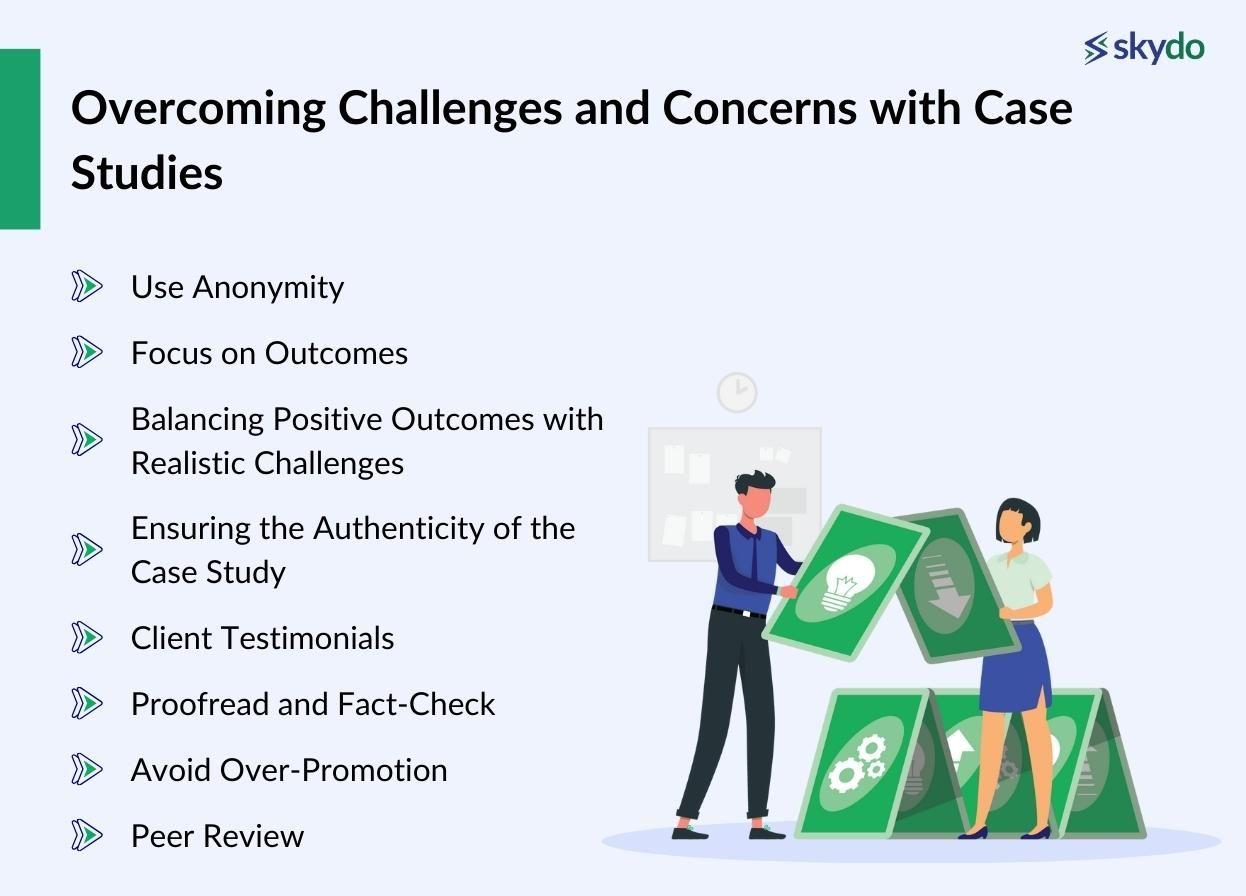
- Use Anonymity: Consider using a pseudonym or keeping the client's identity anonymous while still providing industry and project details. This way, you can showcase your work without revealing the client's identity.
- Focus on Outcomes: Emphasise the positive outcomes and impact of your solutions rather than delving into specific confidential details. Highlighting results and achievements can often convey the value of your work without disclosing sensitive information.
- Balancing Positive Outcomes with Realistic Challenges: While it's important to showcase successes, it's equally crucial to acknowledge and discuss challenges or obstacles faced during the project. This creates a more authentic and credible narrative. Explain how your team navigated these challenges and adapted to them, showing your problem-solving skills.
- Ensuring the Authenticity of the Case Study: Present real and accurate data, statistics, and metrics in your case study. Fabricating information or inflating results can damage your credibility. If possible, include data from reputable sources or third-party validation to support your claims.
- Client Testimonials: Encourage the client to provide genuine testimonials. Authentic client quotes can add credibility to your case study and reinforce the authenticity of your claims.
- Proofread and Fact-Check: Ensure that all information presented in the case study is factually correct. Carefully proofread and fact-check the document to eliminate any inaccuracies or errors.
- Avoid Over-Promotion: While it's natural to want to highlight your strengths, avoid over-promotion or making unrealistic claims. Be transparent about what you can and cannot achieve, and let the results speak for themselves.
- Peer Review: Consider having the case study reviewed by colleagues or industry experts to validate its authenticity and ensure it accurately represents the project and its outcomes.
Incorporating Case Studies into Marketing Strategy
Here's how you can effectively use case studies in various aspects of your marketing strategy:
1. Website and Landing Pages
- Dedicated Case Studies Section: Create a dedicated section on your website for case studies. Organise them by industry, service, or other relevant categories to make it easy for visitors to find what they're looking for.
- Engaging Headlines: Use compelling and descriptive headlines for each case study. A good headline can pique visitors' interest and encourage them to click and learn more.
- Summary and Visuals: Provide a summary of each case study on the landing page, along with engaging visuals such as thumbnails, images, or infographics. This gives visitors a quick overview of the project.
- Clickable Thumbnails: Make the case study thumbnails or images clickable, leading visitors to the full case study when clicked.
- Client Logos: If you have worked with recognisable brands or clients, prominently display their logos on your website. It boosts trust and credibility.
2. Email Marketing Campaigns
- Segmented Email Lists: Segment your email list based on factors such as industry, interests, or past interactions. Send relevant case studies to specific segments to increase the likelihood of engagement.
- Personalised Outreach: Use personalised email subject lines and content that address the recipient's specific needs and pain points. Tailor your case studies to show how your solutions can solve their problems.
- CTAs and Links: Include compelling Calls-to-Action (CTAs) in your emails that direct recipients to the full case study on your website. Use clear and enticing language to encourage click-throughs.
- Follow-Up Sequences: Consider sending a series of emails that tell a story through the case study. Start with an introductory email, follow up with key highlights, and end with a persuasive CTA.
3. Sales Pitches and Presentations
- Customised Content: Customise your case studies for specific sales pitches or presentations. Highlight the aspects of the case study that are most relevant to your audience's needs and interests.
- Visual Aids: Incorporate visuals from the case study, such as charts, graphs, or before-and-after visuals, into your presentations. Visuals can help make your points more compelling.
- Narrative Structure: Use the structure of the case study to guide your presentation. Start with the client's challenges, present your solutions, and conclude with the positive outcomes.
- Client Testimonials: If appropriate, share client testimonials during your pitch or presentation. Hearing positive feedback from satisfied clients can be persuasive.
- Q&A and Discussion: Be prepared to discuss the case study in detail and answer any questions your audience may have. This demonstrates your expertise and reinforces the case study's authenticity.
Incorporating case studies into your marketing strategy can serve as a powerful tool for building trust, demonstrating your capabilities, and ultimately converting potential leads into satisfied customers. Make sure your case studies are well-crafted, focused on solving real-world problems, and aligned with the needs of your target audience.
Conclusion
In the world of business, trust is a priceless currency. When clients trust your expertise and reliability, they are more likely to choose your services and remain loyal over the long term. By investing in well-crafted case studies, you not only demonstrate your capabilities but also nurture trust that can lead to lasting and mutually beneficial business relationships.
Frequently Asked Questions
Q1. How to write case studies?
Ans: To write effective case studies, follow a structured case study format, considering key elements like problem identification, solutions, and results. Ensure a clear case study template and use real examples for authenticity.
Q2. Why case studies are important?
Ans: Case studies are vital for understanding practical applications of theories, showcasing real-world problem-solving, and providing valuable insights into specific situations. They bridge the gap between theory and practice, enhancing learning.
Q3. How to write case studies for business?
Ans: When writing case studies for business, adhere to a business-centric case study format. Focus on addressing business challenges, strategic decision-making, and outcomes. Use relevant case study examples to illustrate concepts effectively.
Q4. Why are case studies important in business?
Ans: Case studies play a crucial role in business by offering insights into successful strategies, problem-solving approaches, and decision-making processes. They provide tangible evidence of business concepts in action, aiding in learning and decision-making within a business context.












